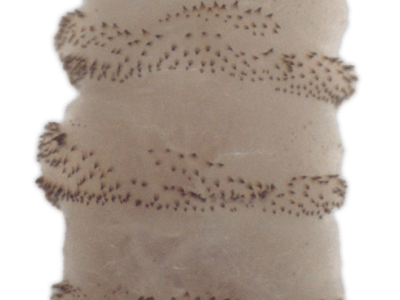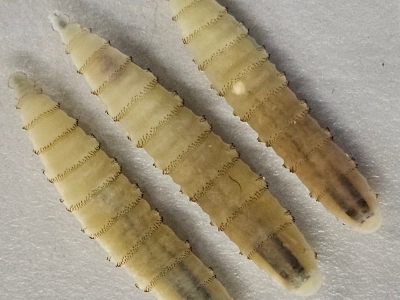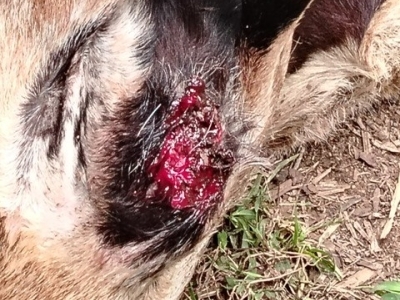New World Screwworm Photo Gallery
Warning: Graphic Images!
The following galleries contain graphic images of New World screwworm infestations in animals.
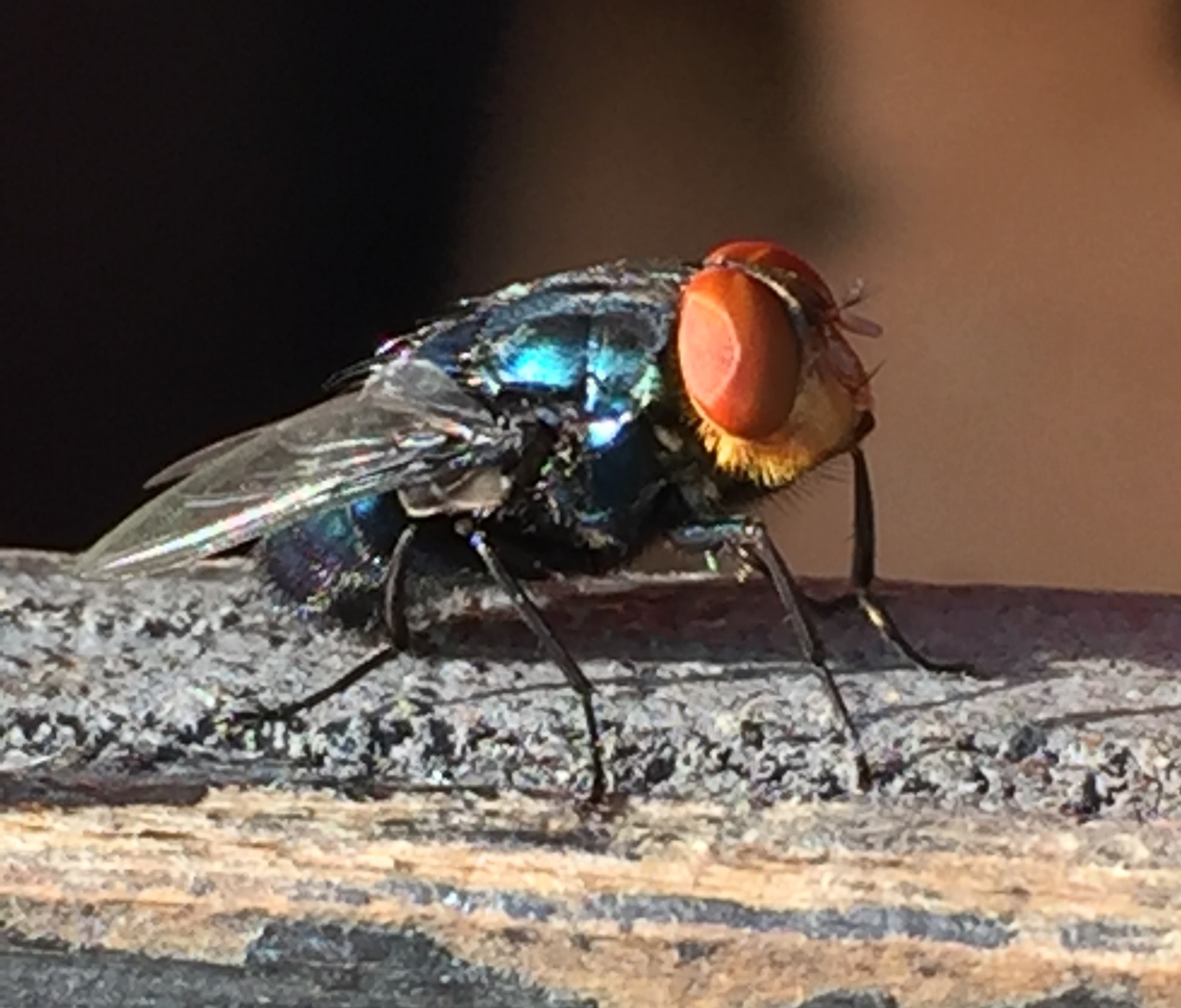
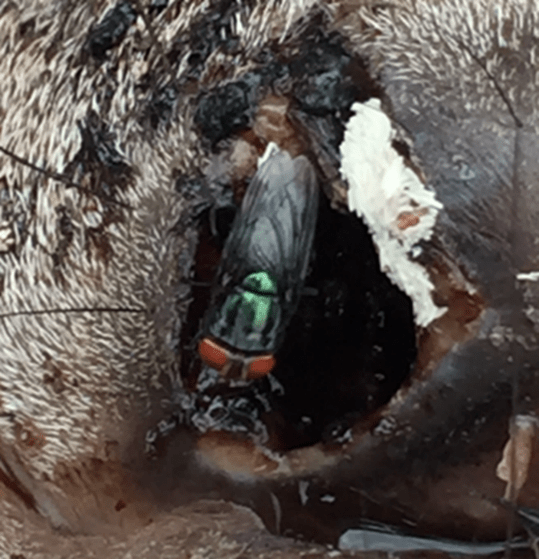
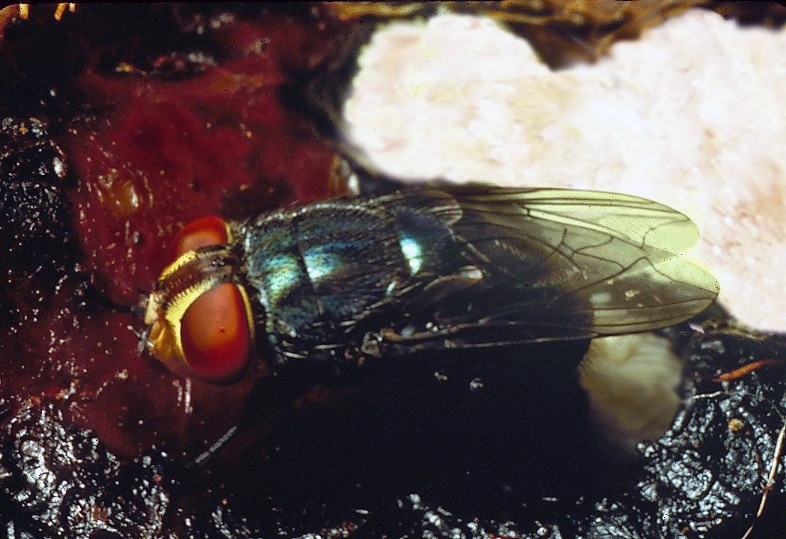
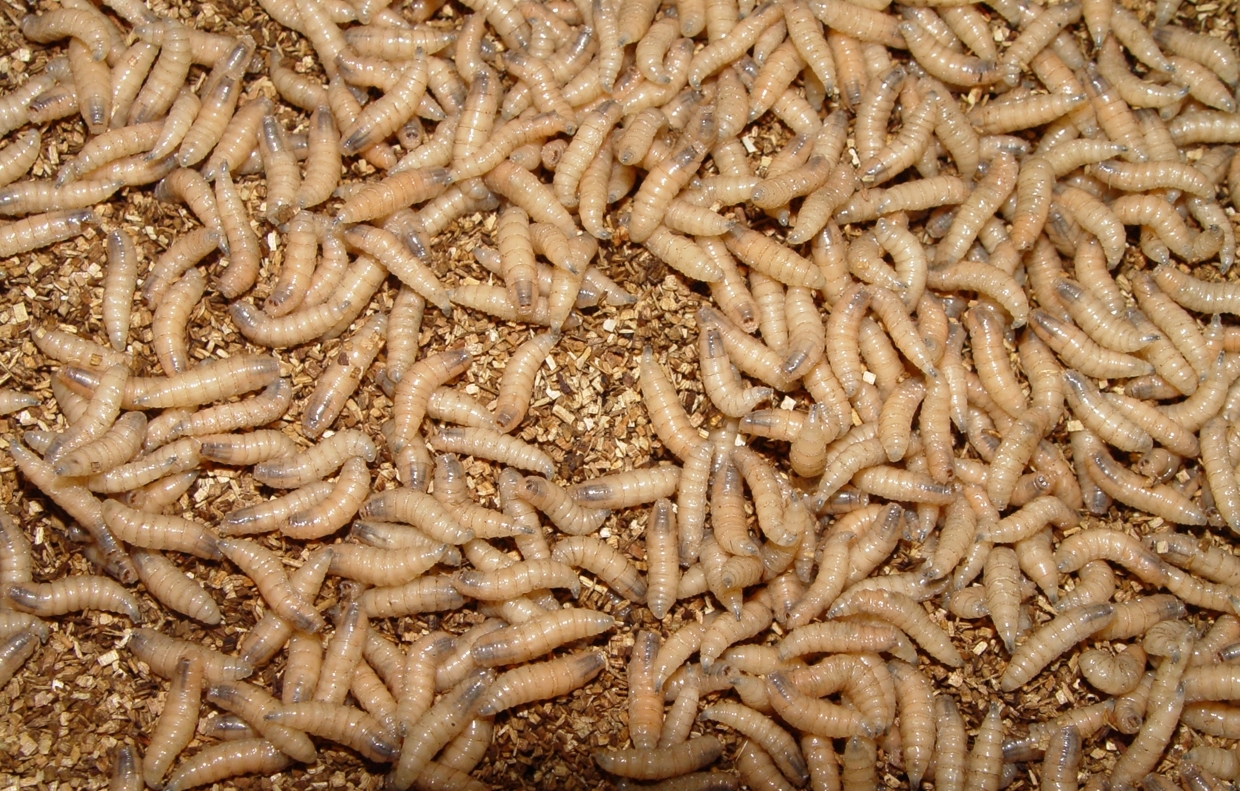
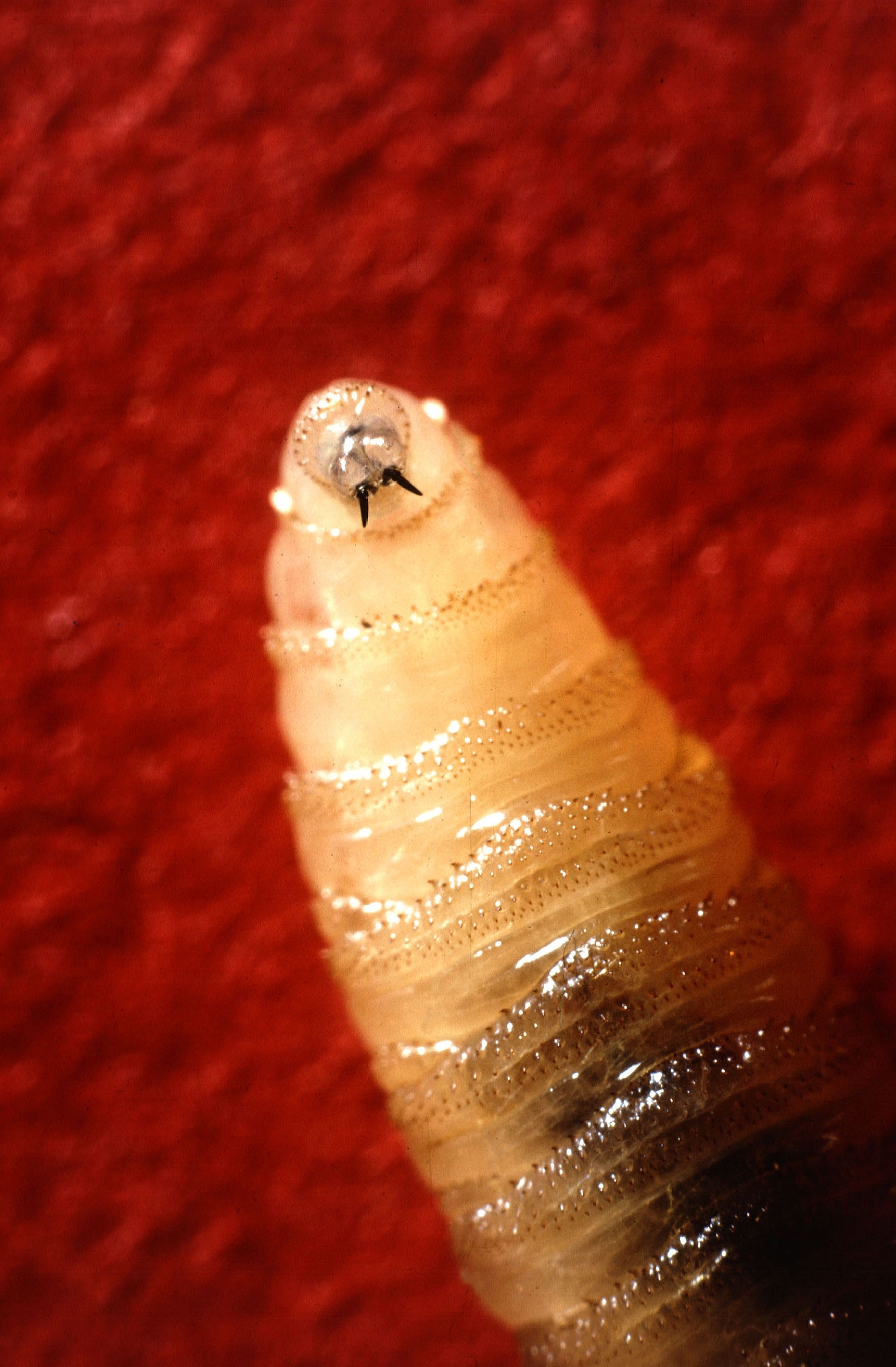
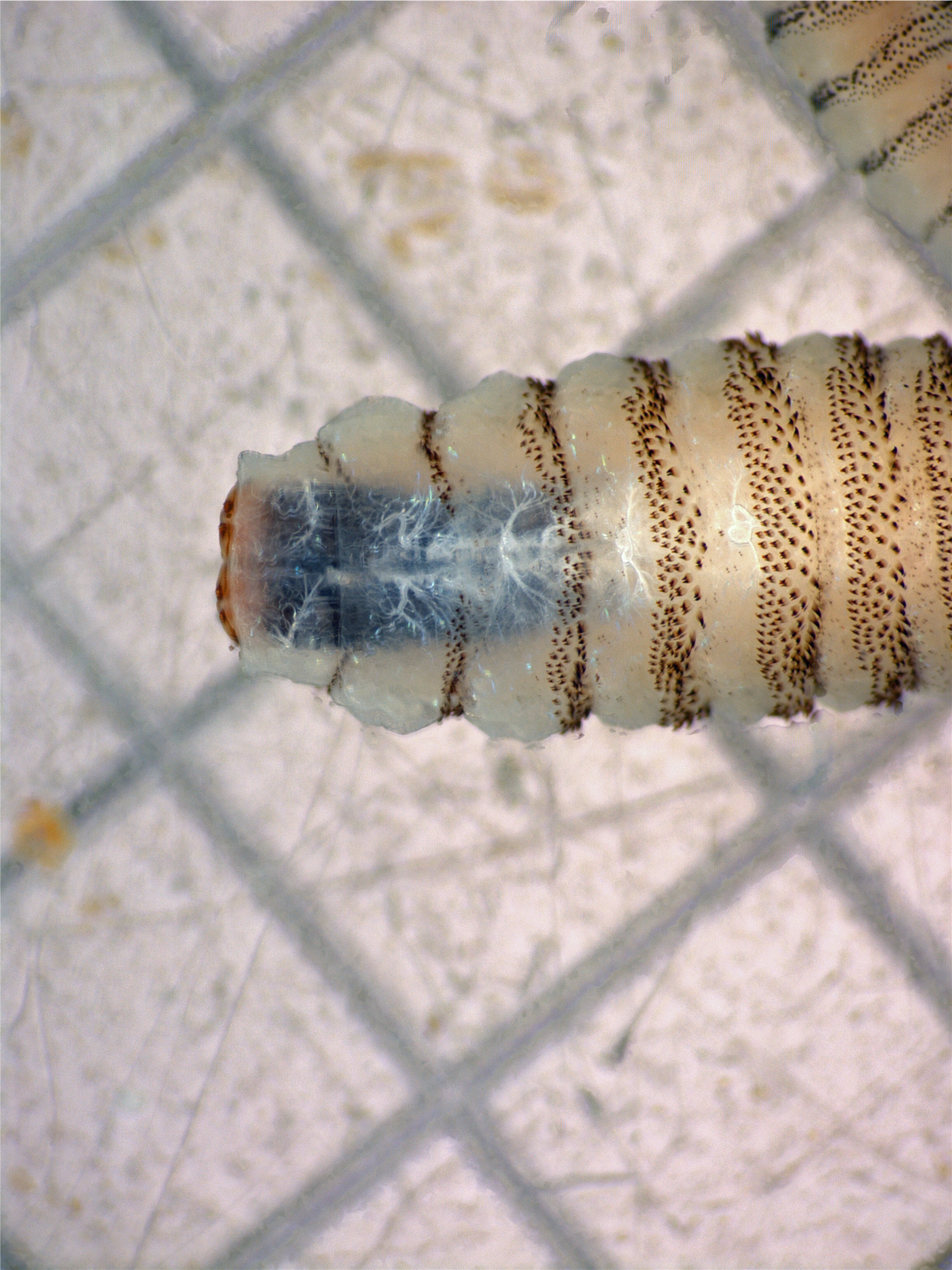

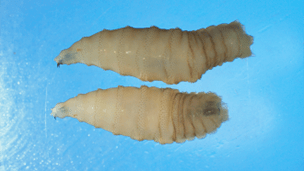


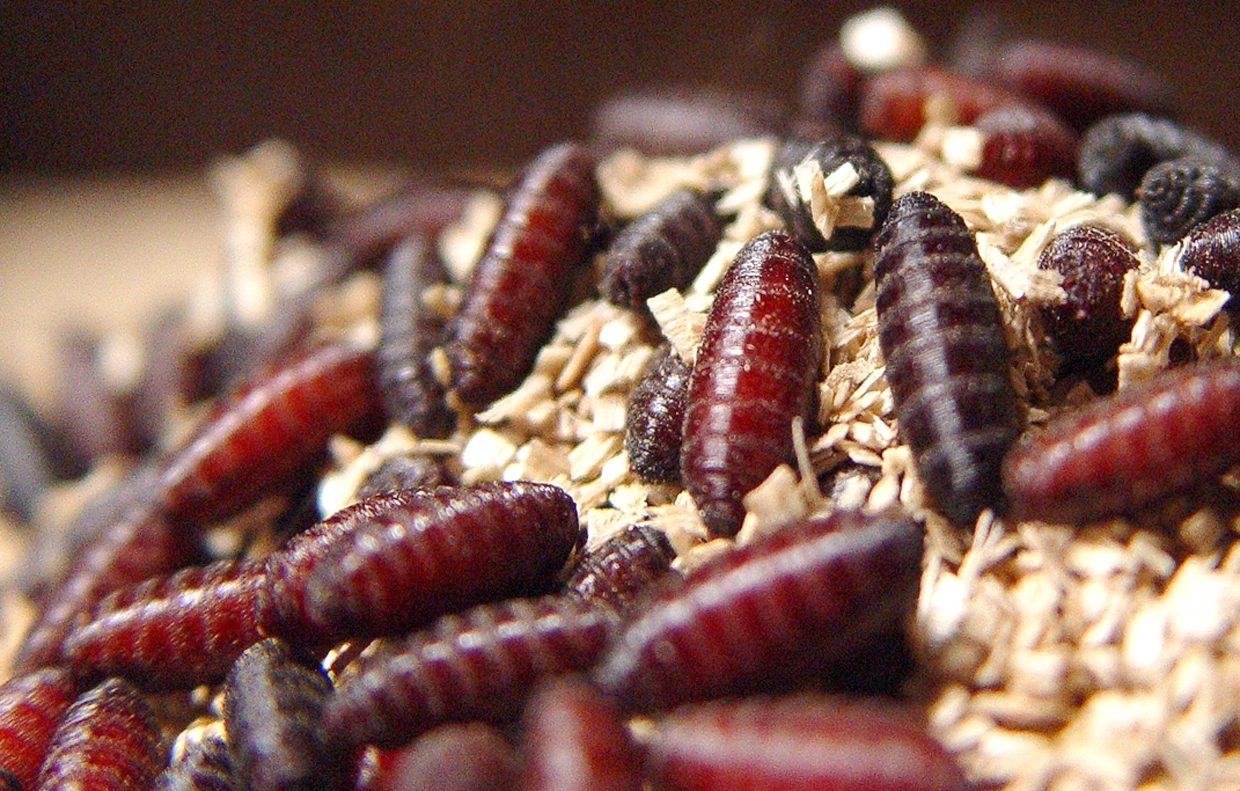
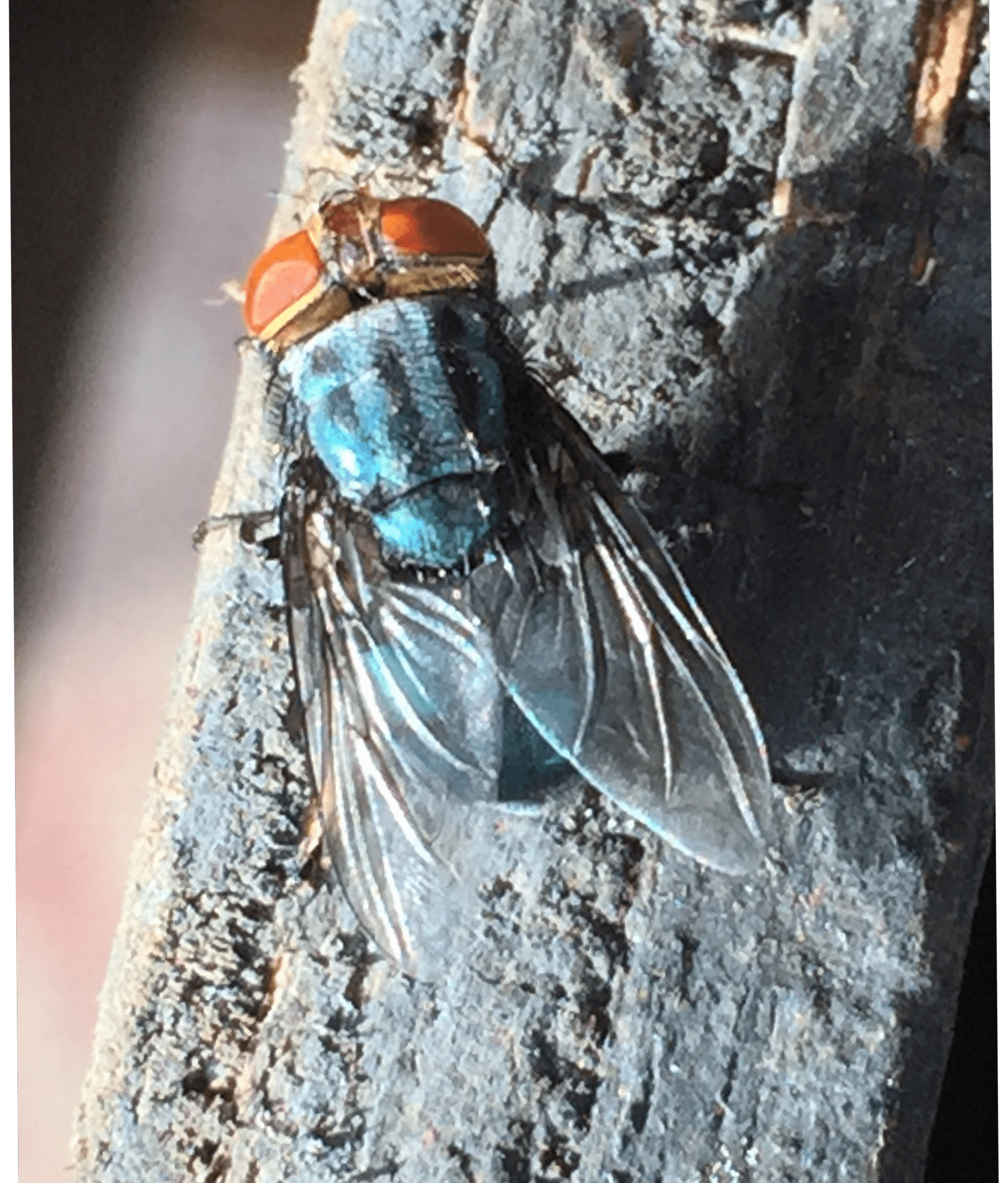
Closeup of an adult New World screwworm fly
New World screwworm flies are about the size of a common housefly (or slightly larger), with orange eyes, a metallic blue or green body, and three dark stripes along its back.
Photo by USDA
New World screwworm fly and eggs
Screwworm infestations begin when a female fly lays eggs on a wound or orifice of a live warm-blooded animal. Female flies are attracted to the odor of a wound or opening such as the nasal or eye openings, umbilicus of a newborn, or genitalia.
Photo by USDA
Closeup of New World screwworm fly and egg mass on a wound
Wounds as small as a tick bite may attract a female New World screwworm fly to feed. One female New World screwworm fly can lay up to 3,000 eggs in her lifespan.
Photo by USDA
Mature New World screwworm larvae (maggots)
Larvae hatch from New World screwworm eggs within about 24 hours. The larvae will then burrow into the infested animal's wound to feed on the living flesh.
Photo by COPEG
Closeup of New World screwworm larva, showing mouth hooks
New World screwworm larvae (maggots) cause extensive damage by tearing at the hosts’ tissue with sharp mouth hooks. The wound can quickly become enlarged and deeper as more maggots hatch and feed on living tissue.
Photo by USDA
Closeup of New World screwworm larva (maggot)
Photo by USDA
Closeup of New World screwworm larva (maggot)
Photo by USDA
Closeup of two New World screwworm larvae (maggots)
Photo by USDA
Closeup of three New World screwworm larvae (maggots)
Photo by Sohath Yusseff-Vanegas, USDA Agricultural Research Service
Closeup of three New World screwworm larvae (maggots)
Photo by Sohath Yusseff-Vanegas, USDA Agricultural Research Service
New World screwworm pupae
After about 7 days of feeding on the infested animal's wound, New World screwworm larvae drop to the ground, burrow into the soil, and pupate.
Photo by COPEG
Closeup an adult New World screwworm fly
Adult New World screwworm flies will emerge from the soil after 7–54 days of pupation, depending on temperature and humidity. Female flies mate after 3 days, and males can mate within 24 hours of maturation.
Photo by USDA
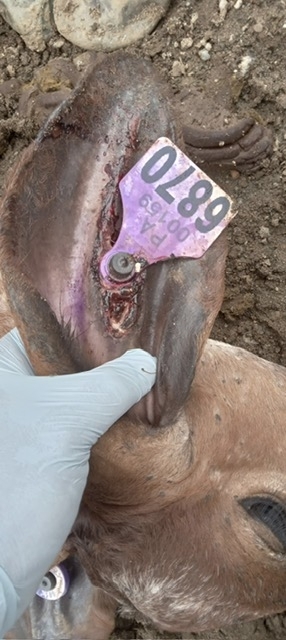

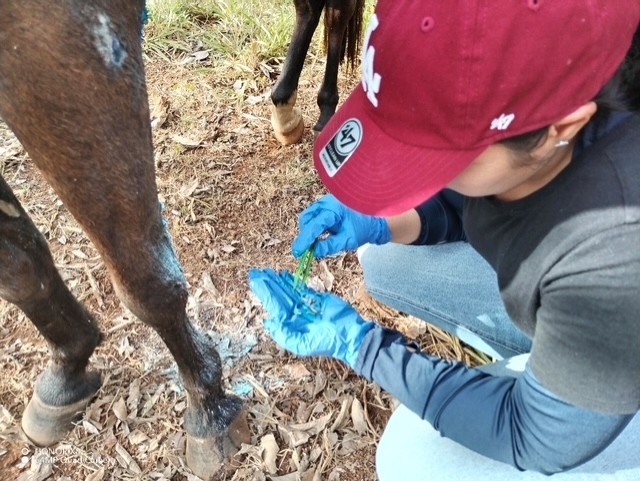
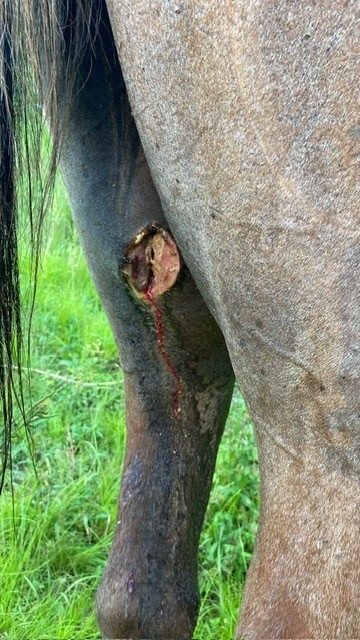




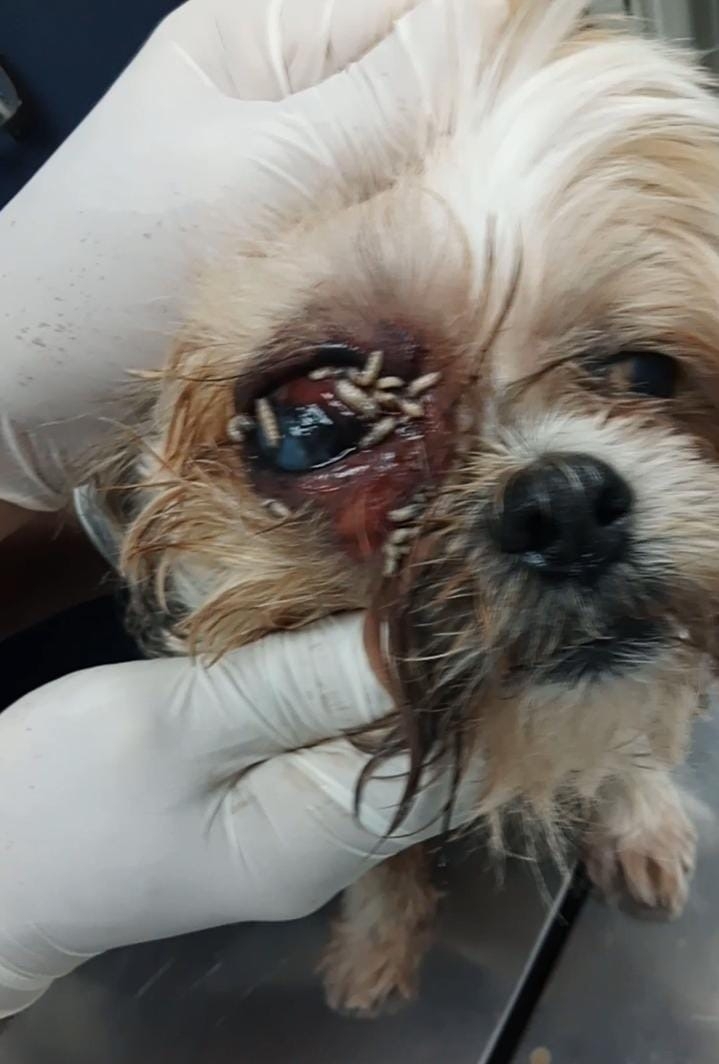
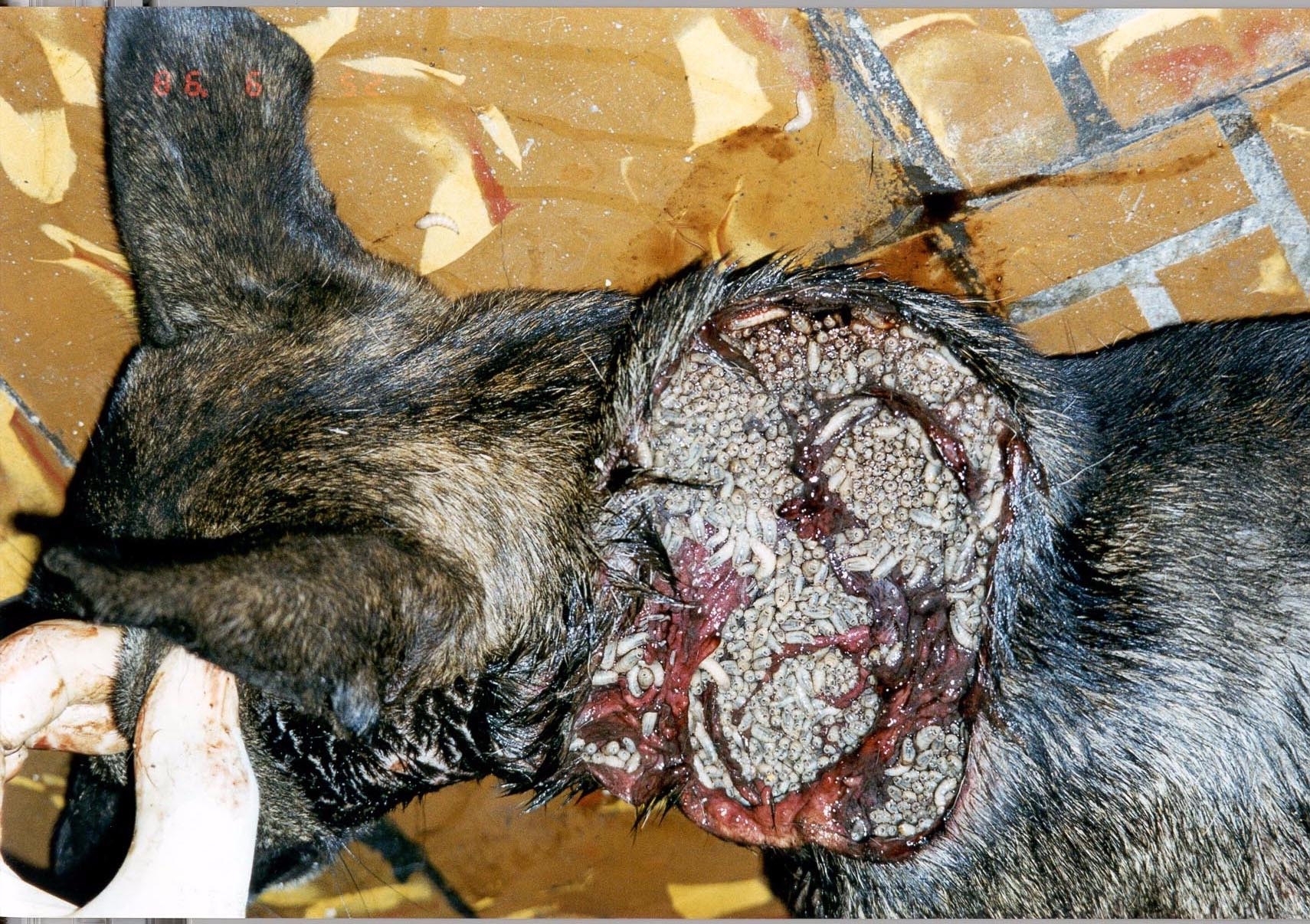
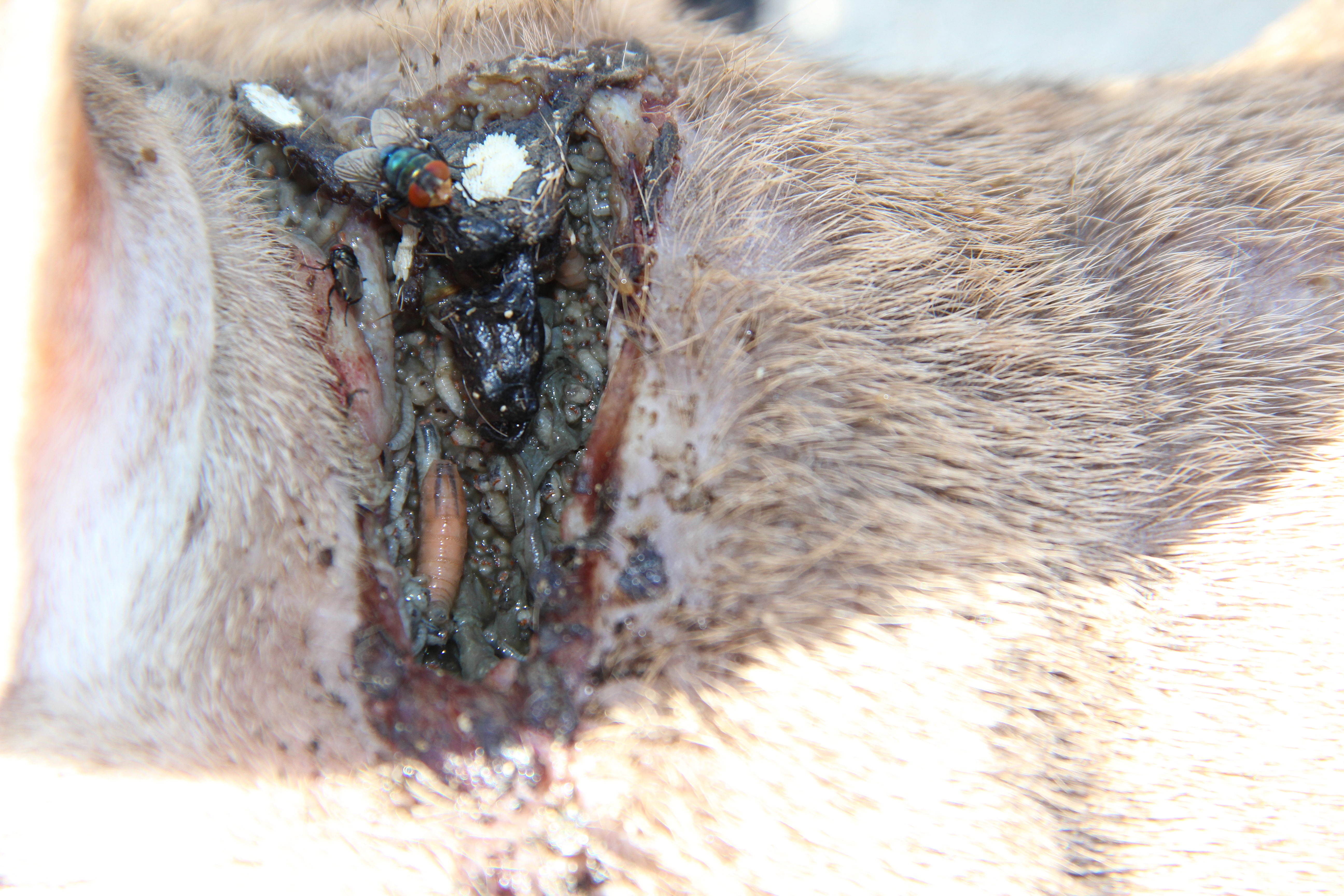
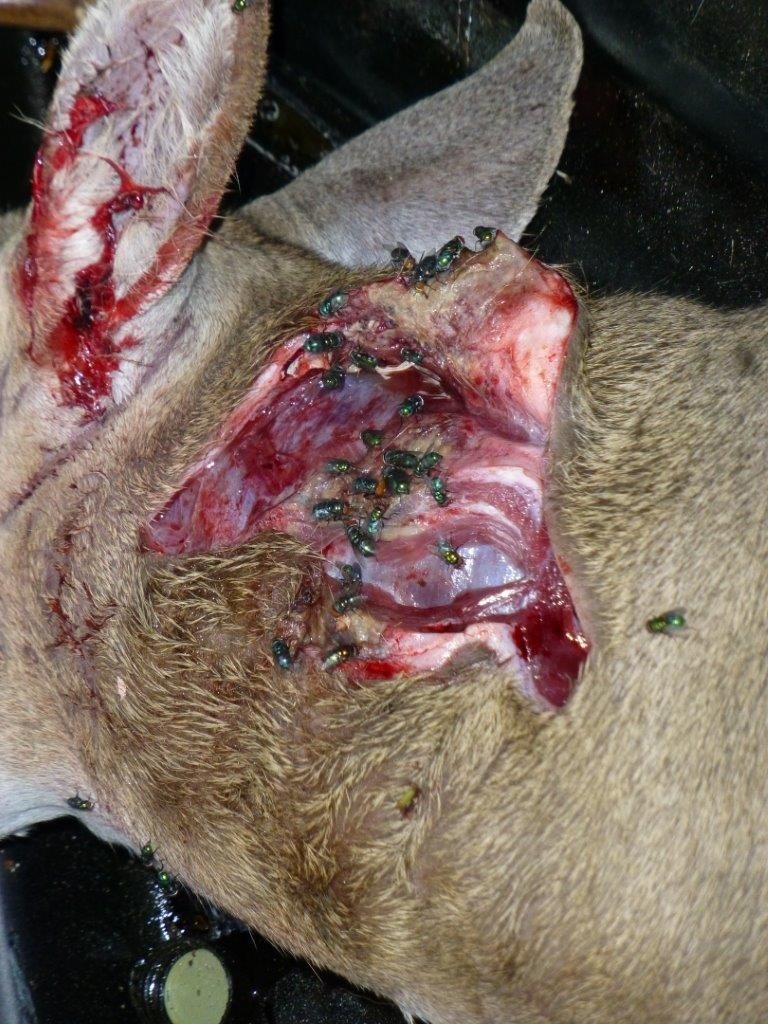
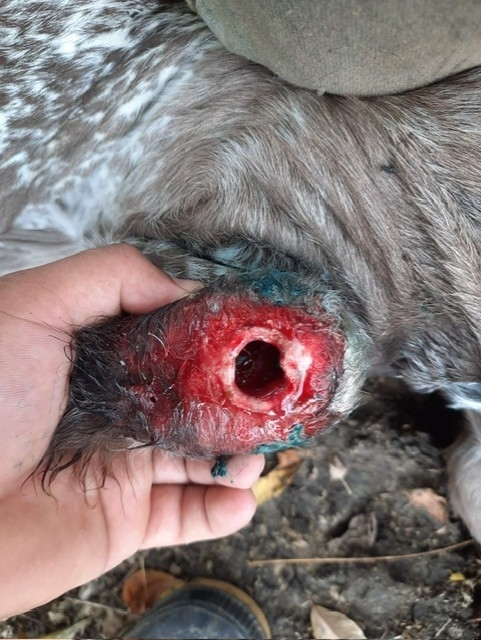
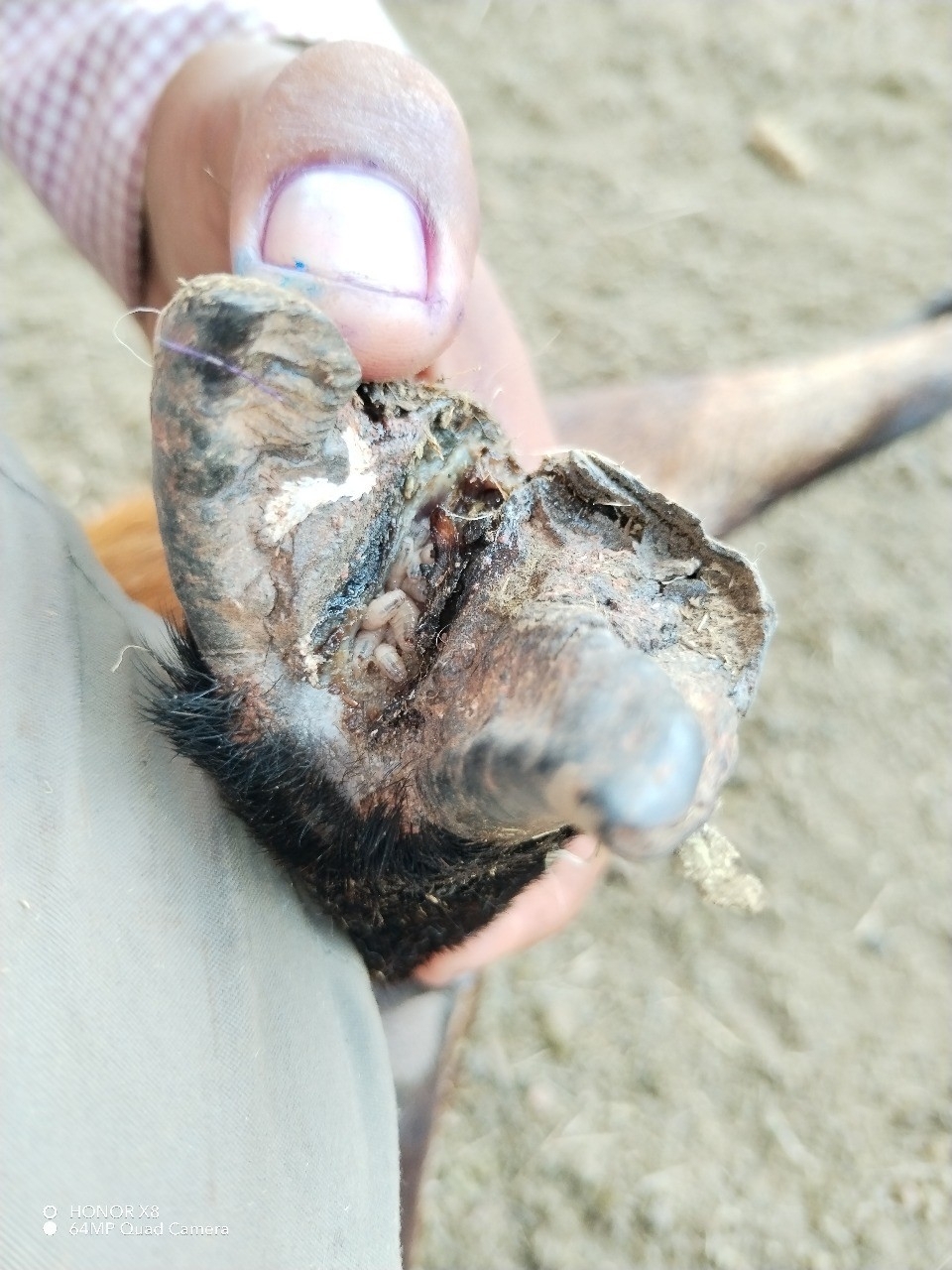
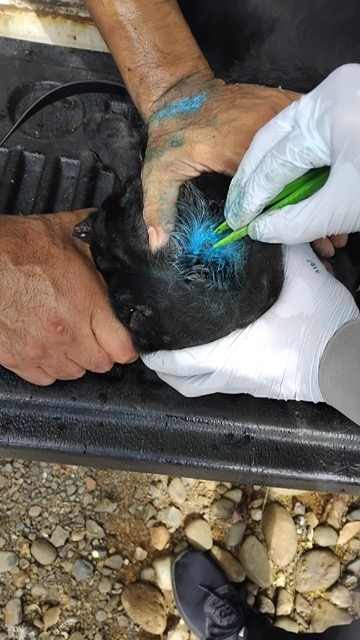
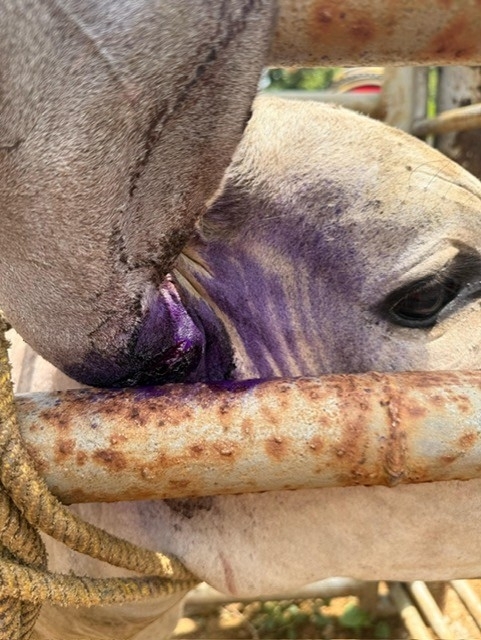


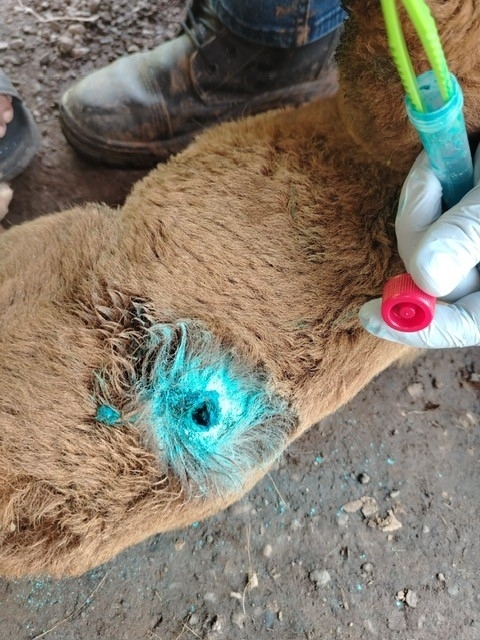





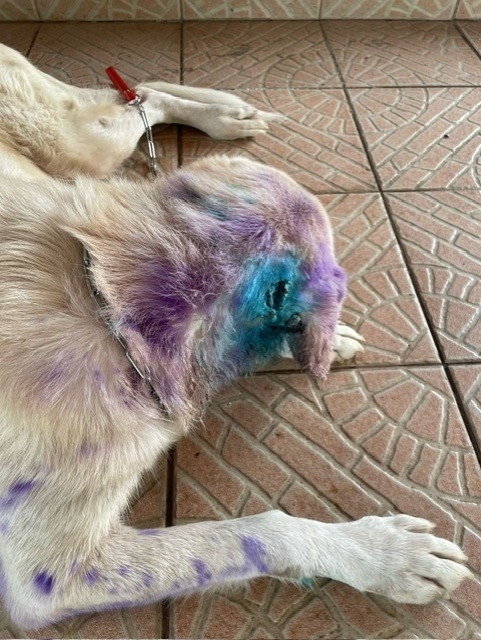
Eartag wound infested with New World screwworm
Photo by Dr. Feliciano Bravo, COPEG
New World screwworm-infested navel on a baby cow
Photo by Sohath Yusseff-Vanegas, USDA Agricultural Research Service
Deer infested with New World screwworm
Photo by USDA
Deer infested with New World screwworm
Photo by USDA
Inspecting New World screwworm larvae removed from an infested horse
Photo by Dr. Feliciano Bravo, COPEG
New World screwworm infestation in a horse's leg
Photo by Dr. Feliciano Bravo, COPEG
New World screwworm infestation in a goat's leg
Photo by Dr. Feliciano Bravo, COPEG
Goat infested with New World screwworm
Photo by Dr. Feliciano Bravo, COPEG
Closeup view of New World screwworm-infested wound on a goat
Photo by Dr. Feliciano Bravo, COPEG
Severe New World screwworm infestation in a goat
Photo by Dr. Feliciano Bravo, COPEG
Pig with New World screwworm infestation in its mouth
Photo by Dr. Feliciano Bravo, COPEG
Chicken infested with New World screwworm
Photo by Dr. Feliciano Bravo, COPEG
Closeup of a chicken infested with New World screwworm
Photo by Dr. Feliciano Bravo, COPEG
Dog infested with New World screwworm
Photo by Dr. Feliciano Bravo, COPEG
Severe New World screwworm infestation on a dog's neck
Photo by Winthorpe Marsden, Jamaican Ministry of Agriculture
Closeup of an animal's wound from New World screwworm infestation
Photo by USDA
Closeup of a New World screwworm female fly, eggs, and larvae on an animal's wound
Photo by Samantha Gibbs, U.S. Fish and Wildlife Service
New World screwworm flies attracted to an animal's wound
Photo by USDA
Closeup of an animal's wound from New World screwworm infestation
Photo by USDA
New World screwworm infestation on an animal's hoof
Photo by USDA
Removing New World screwworm larvae from an infested animal
Photo by USDA
Cow treated for New World screwworm infestation
Photo by Dr. Feliciano Bravo, COPEG
Goat treated for New World screwworm infestation
Photo by Dr. Feliciano Bravo, COPEG
Goat treated for New World screwworm infestation
Photo by Dr. Feliciano Bravo, COPEG
Goat treated for New World screwworm infestation
Photo by Dr. Feliciano Bravo, COPEG
Goat treated for New World screwworm infestation
Photo by Dr. Feliciano Bravo, COPEG
Goat treated for New World screwworm infestation
Photo by Dr. Feliciano Bravo, COPEG
Goat treated for New World screwworm infestation
Photo by Dr. Feliciano Bravo, COPEG
Goat treated for New World screwworm infestation
Photo by Dr. Feliciano Bravo, COPEG
Closeup view of goat treated for New World screwworm infestation
Photo by Dr. Feliciano Bravo, COPEG
Dog treated for New World screwworm infestation
Photo by Dr. Feliciano Bravo, COPEG








